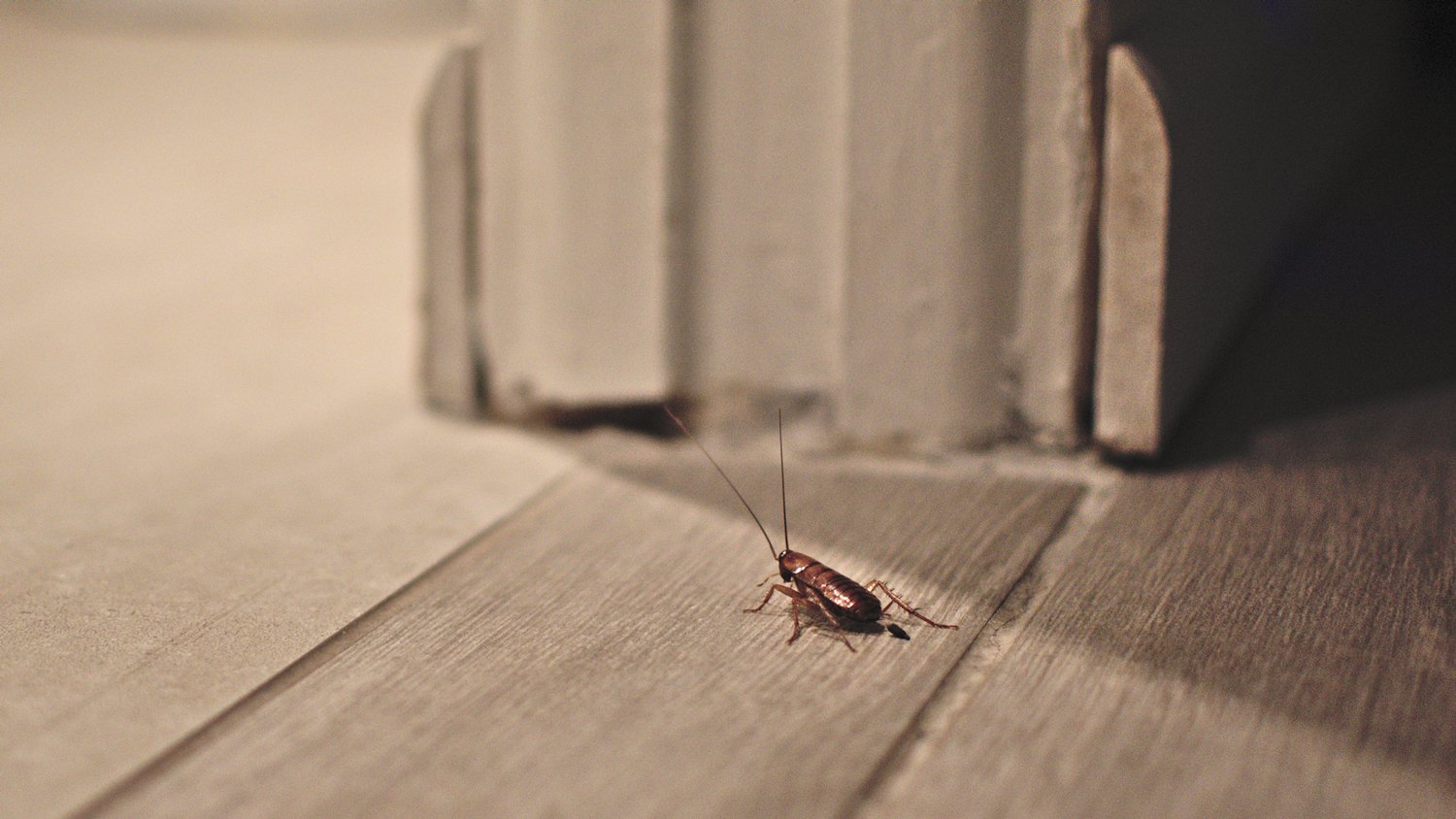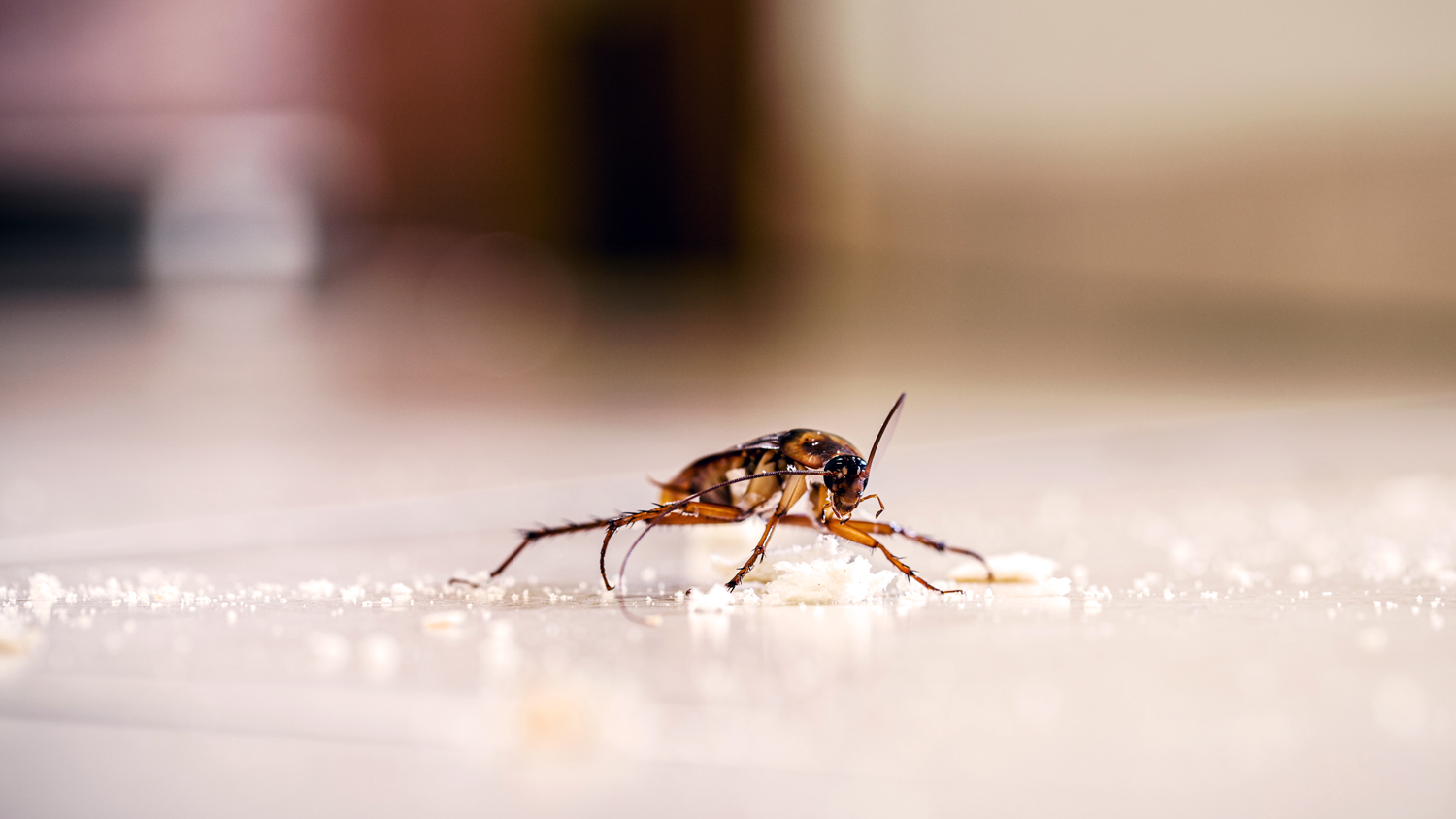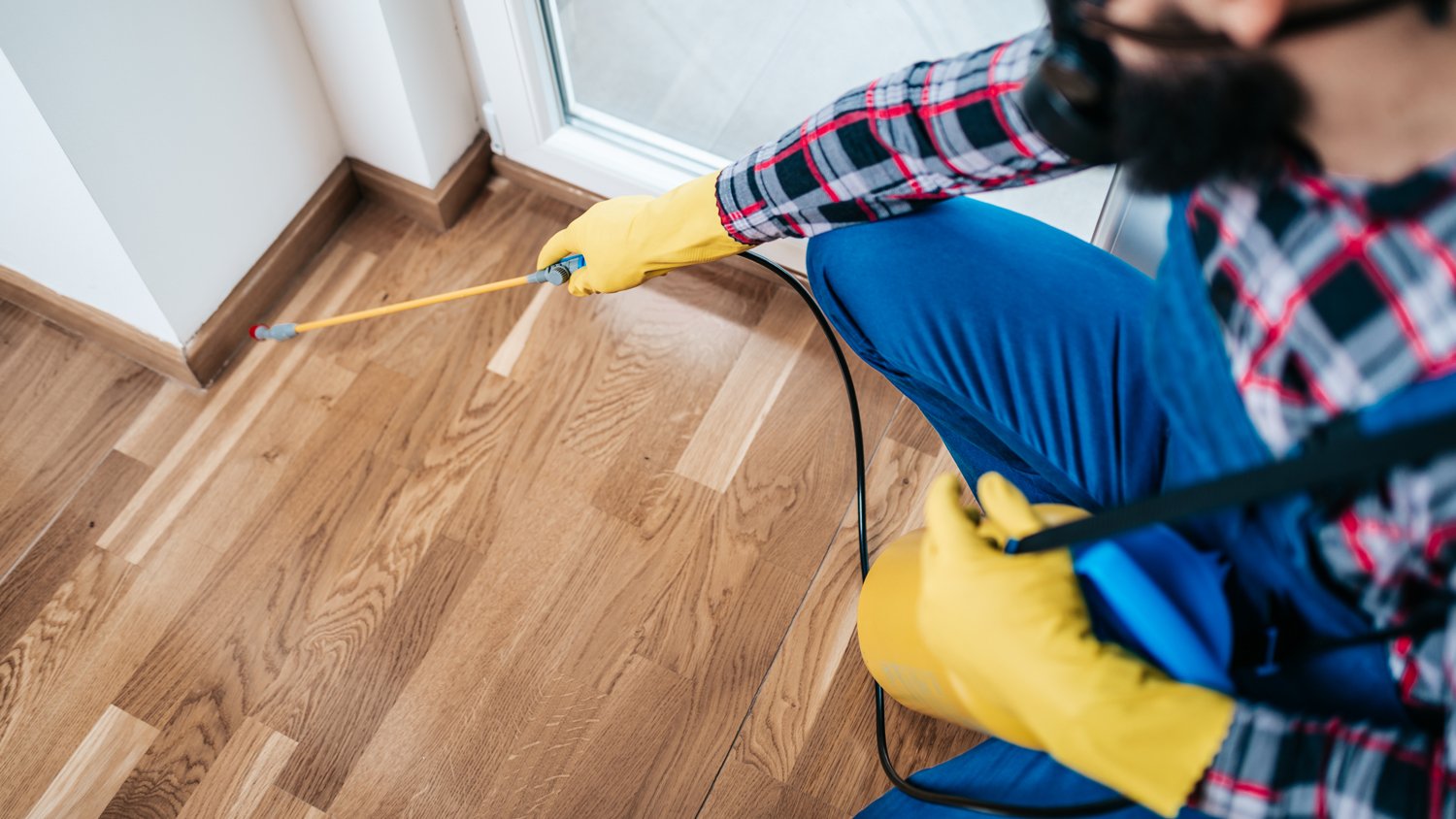
Whether you have bugs, bats, or rodents invading your home, you’ll want to contact an exterminator quickly. Find out how much pest control costs in Columbus, OH.
Some species of cockroaches can fly, but they don’t often—and they’re faster on foot


Cockroaches have been around for millions of years and are dangerous to humans because of the diseases they carry.
Some cockroach species can fly, but they’re not very good at it and don’t do it often.
Flying cockroach species include the American cockroach, brown-banded cockroach, and wood cockroach.
If your home has a flying cockroach infestation, hire an exterminator quickly, then thoroughly clean your house to prevent the spread of disease.
The sight of a cockroach scurrying across your kitchen floor can be scary enough, but the thought of one soaring through the air? That’s nightmare fuel.
So, can cockroaches fly? While some cockroaches can fly, you’re not likely to see one soaring through your kitchen anytime soon. Let’s take a closer look at cockroach characteristics, including their flying and jumping abilities.
Cockroaches are nocturnal, sometimes winged insects with flat, oval bodies. Though primitive in design, cockroaches have lived and thrived without much change for 300-plus million years. (Yep, they were around with the dinosaurs and have theoretically survived three major mass extinctions on earth.)
Across the globe, you can find more than 4,500 different types of cockroaches, but only about 30 are considered pests. In the United States, there are between 50 and 70 species of cockroaches, many of which aren’t native to the country. We sometimes refer to cockroaches as water bugs and palmetto bugs.
Knowing how to get rid of roaches when you spot them in your home is important: Cockroaches carry bacteria and diseases that can make you sick, and many people are allergic to them.

Some species of cockroaches can fly, but most cannot. Those that can fly don’t do it often (and when they fly, it’s often more like gliding). A flying cockroach’s body mass is too large compared to their small wings, which makes it challenging to go long distances or even control where they’re flying. Plus, flying cockroaches are large and slow in the air, making them easier targets for winged predators like bats.
In most instances, it makes more sense for cockroaches to flee on foot when threatened. The American cockroach can cover 50 body lengths in one second; for comparison, a cheetah sprints just 18 body lengths per second at full speed.
Not every cockroach species can fly, but the following roaches do:
American cockroaches
Asian cockroaches
Australian cockroaches
Brown-banded cockroaches (males only)
Cuban cockroaches
Wood roaches
Fortunately, most cockroaches keep all six “feet” on the ground, including two common cockroaches in the U.S.: German cockroaches and Oriental cockroaches. (German cockroaches can glide, if necessary.)
Though their hindlegs look long and powerful, cockroaches cannot jump using their legs, with the exception of the leaproach variety (Saltoblattella montistabularis). Instead, cockroaches that get stuck on their backs may use their wings to propel themselves off the ground so they can land right-side-up.

Not many cockroaches can fly, and they’re notoriously bad at it. Fleeing predators on foot is way more effective for them. So why have cockroaches evolved to fly?
The main reason some cockroaches fly is to regulate body temperature. Because cockroaches are ectothermic (cold-blooded), they rely on the environment around them to regulate their body temperature. Their ideal temperature for roaches lies between 75 and 85 degrees Fahrenheit. When it gets too hot, flying cockroaches may fly to a higher altitude seeking out cooler temps.
In other instances, cockroaches may fly to:
Search for food in higher places
Glide to a lower altitude more quickly
Escape a predator when it’s not feasible on foot
Reach a light source (if attracted to it)
Although only a few types of cockroaches can fly, almost all adult cockroaches have wings. So why does this insect keep its wings if it doesn’t use them to fly?
Cockroach wings actually serve other useful purposes:
Their wings are crucial to their balance—they serve as a counterbalance to the rest of their body.
Cockroaches can use their wings to flip right-side-up if they get stuck on their backs.
In a pinch, non-flying cockroaches may glide to flee danger.
Flying cockroaches aren’t inherently more dangerous than regular roaches—and the threat doesn’t lie in a bite or sting. Instead, cockroaches carry disease, such as E. Coli and salmonella, by walking across your floors and counters. Their feces and body parts can also trigger asthma attacks and allergic reactions in some people.
Flying cockroaches may be able to access harder-to-reach parts of your home, meaning they can spread disease more easily and may be harder to exterminate. It also means they can enter your home more easily through open windows.

Cockroach infestations are dangerous for homeowners regardless of whether the insects fly or not. If you find signs of a cockroach infestation, contact a local bug and insect exterminator to handle the problem as quickly as possible. A single roach extermination costs between $100 and $400 for minor infestations, $300 to $700 for moderate infestations, and $2,000 to $8,000 for major infestations.
If you’d prefer to try removing the cockroaches before calling in a professional exterminator, you can attempt to clear them out using a natural roach repellant. After the cockroaches are gone, don’t forget to do a deep clean of your home, particularly scrubbing floors, counters, and other cooking surfaces. If cockroaches got into your pantry, throw away any opened foods. It may seem wasteful, but it’s possible that cockroaches got into the food and left droppings—or even eggs—inside.
Here’s a full look at what attracts roaches to your home. Keeping a tidy house and eliminating moisture are surefire ways to keep flying roaches from trying to get inside.
Dirty dishes
Open pet food
Garbage
Unkempt lawn
Moisture near indoor plumbing and appliances
Another ongoing way to prevent an unsightly roach infestation is to keep an eye out for the pesky insects. Common hiding spots to find cockroaches include air vents, behind appliances, cabinets, pipes, and upholstered furniture. Keep these areas as clean as possible, and stay vigilant for signs of intruding insects.
From average costs to expert advice, get all the answers you need to get your job done.

Whether you have bugs, bats, or rodents invading your home, you’ll want to contact an exterminator quickly. Find out how much pest control costs in Columbus, OH.

Keep your home free of termites and the damage they do. Learn more about inspections, infestations, and the average cost of termite treatments.

Your mosquito misting system cost will vary based on factors such as the size, type, brand, and more. Find out what the budget for this system looks like.

Pest inspection costs depend on the type of inspection, location, and other factors. Learn more about how much pest inspections cost with this guide.

Bed bugs are temperamental when it comes to temperature. Find out what temperature kills bed bugs for future reference.

There's no one simple trick for getting rid of fleas in your house. But when you come at them from all angles, it's easy to send fleas packing for good.